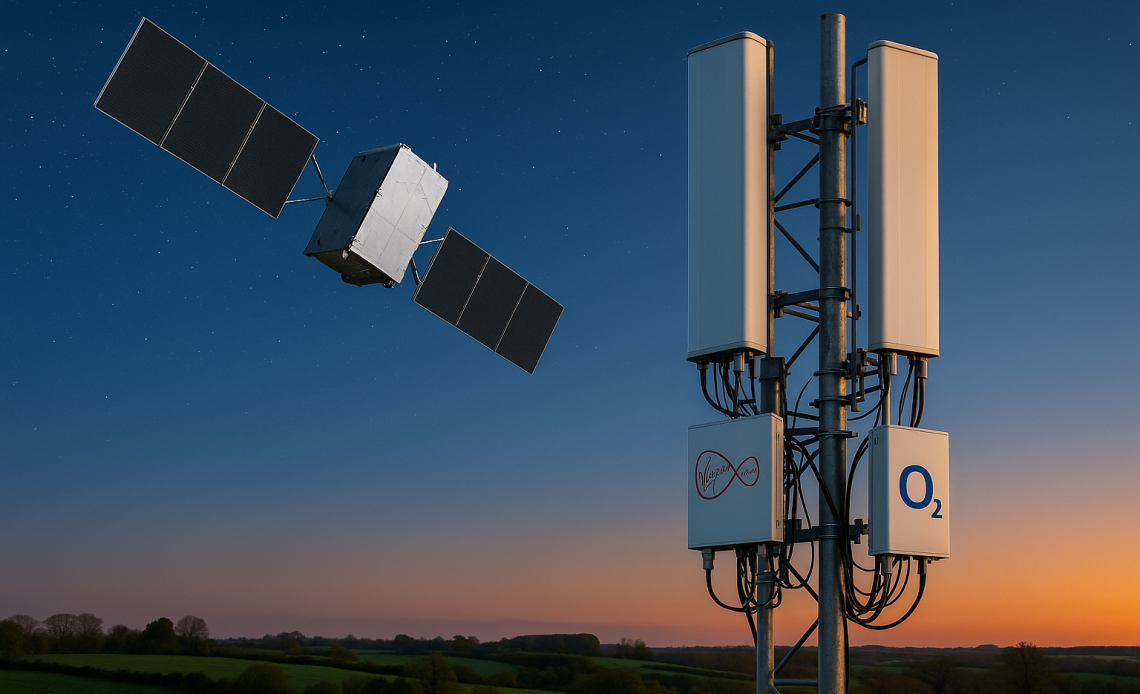Elon Musk’s satellite venture Starlink has signed its first telecom partnership in the UK, joining forces with Virgin Media O2 (VMO2) to offer mobile connectivity through space-based technology.
The deal marks a strategic shift in the British telecom market, aiming to close the coverage gap in rural and remote regions through the new “O2 Satellite” service.
Launching in the first half of next year, the collaboration is set to bring basic messaging capabilities to customers when traditional mobile signals are unavailable.
As Starlink’s satellite technology evolves, the service could extend to include voice calls and data-heavy applications such as social media and video streaming, providing continuous connectivity even in the most isolated areas.
Expanding coverage through low-Earth orbit satellites
Starlink’s direct-to-device technology differs from its broadband services. Instead of requiring a user terminal, mobile users will be able to connect directly to Starlink satellites through their smartphones.
The partnership is expected to lift Virgin Media O2’s national coverage from 88% to 95%, addressing one of the UK’s persistent telecom challenges — patchy service in rural zones.
The deal reflects a broader push across Europe to bring satellite-based mobile coverage to the public.
Starlink, operated by Musk’s SpaceX, currently has more than 600 low-Earth orbit satellites in operation, enabling faster and more stable links than traditional geostationary systems.
The company’s growing satellite constellation provides it with a competitive edge in a market that is rapidly heating up.
Starlink gains ground in Europe’s telecom race
The agreement makes Starlink one of the first providers to roll out direct-to-device connectivity in Europe. This technology could allow UK users to stay connected while hiking, sailing, or travelling through remote locations.
It is also expected to help Virgin Media O2 bolster its network quality and modernise its brand image after years of lagging behind rivals in innovation and customer retention.
VMO2 has been investing heavily in its network infrastructure, including acquiring new spectrum through government auctions and expanding its 5G standalone rollout.
By integrating satellite technology into its mobile offering, the company aims to bridge the gap between terrestrial and orbital communication networks.
The initiative also supports the UK government’s broader ambition to eliminate mobile “not-spots,” particularly in rural communities and along transportation corridors where connectivity remains inconsistent.
Competition intensifies among telecom giants
The partnership follows a series of moves by other major operators entering the satellite-to-mobile space. Vodafone has an existing alliance with US-based AST SpaceMobile to provide similar services across Europe.
Vodafone’s chief executive confirmed earlier this year that its satellite-enabled network will launch next year.
However, Starlink’s early advantage lies in its extensive operational network of low-Earth orbit satellites. US carrier T-Mobile also partnered with Starlink earlier this year to deliver similar connectivity to American users.
This growing list of collaborations underlines Starlink’s ambition to dominate the direct-to-device market before competitors reach full deployment.
A new phase for Virgin Media O2’s innovation strategy
For Virgin Media O2, the Starlink deal marks a turning point in its long-term growth strategy.
After struggling in recent years to retain its innovation-driven image, the company is using this partnership to reinforce its position as a forward-looking telecom operator.
The introduction of O2 Satellite is described internally as the “logical extension” of the company’s network investment efforts, strengthening customer access to uninterrupted mobile service.
The company’s focus on upgrading its core network and expanding its 5G presence complements its satellite ambitions.
This aligns with the wider telecom industry trend toward hybrid connectivity, which combines terrestrial and orbital technologies to deliver more reliable coverage.
As competition intensifies between global and regional players, Starlink’s UK venture with Virgin Media O2 could set a new precedent for how mobile operators approach universal coverage.
With the service expected to go live in 2025, customers will soon be able to test whether space-based networks can deliver on the promise of seamless nationwide connectivity.
The post Musk’s Starlink partners with Virgin Media O2 to launch UK’s first satellite network appeared first on Invezz







